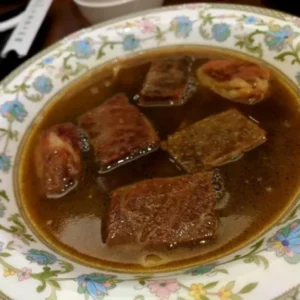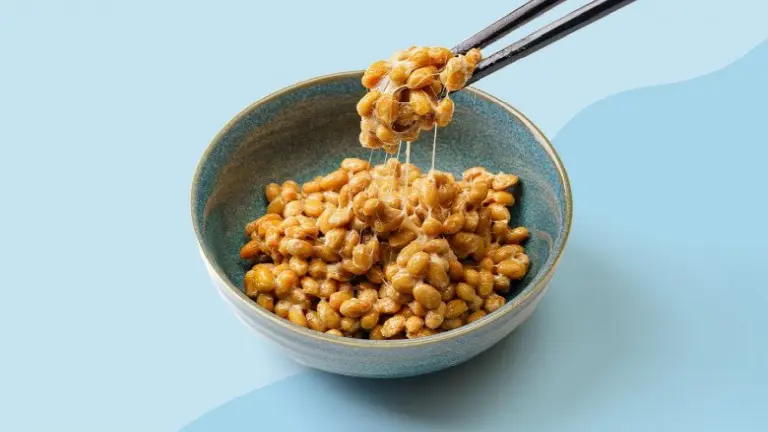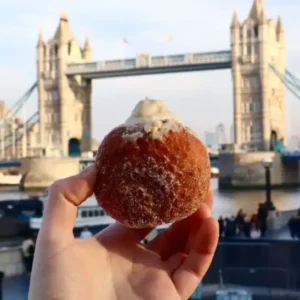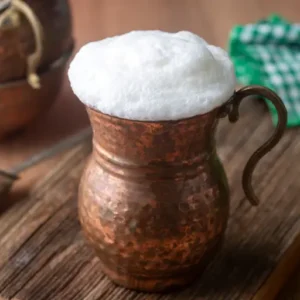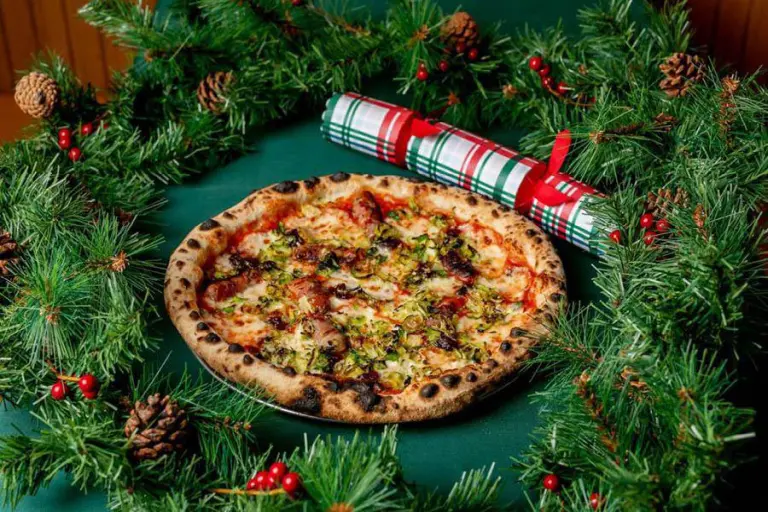Imagine biting into a piece of shark that smells like ammonia and tastes like aged blue cheese soaked in bleach. For most, it’s a food nightmare. For Icelanders, it’s tradition.
Welcome to the world of Hákarl, Iceland’s most notorious dish — a fermented shark meat delicacy that tests the courage of food travelers from around the globe. It’s been called “the worst-tasting food in the world” by many… yet for locals, it’s a symbol of national pride and survival.
If you’re planning to visit Iceland and want to do more than see waterfalls and glaciers, this is your chance to taste history — and earn your stripes as a true adventurer.
What is Hákarl?
Hákarl (pronounced HOW-kartl) is the fermented flesh of the Greenland shark, a species native to the icy waters around Iceland. The shark’s fresh meat is toxic when raw due to high levels of urea and trimethylamine oxide — substances that help it survive in extreme cold.
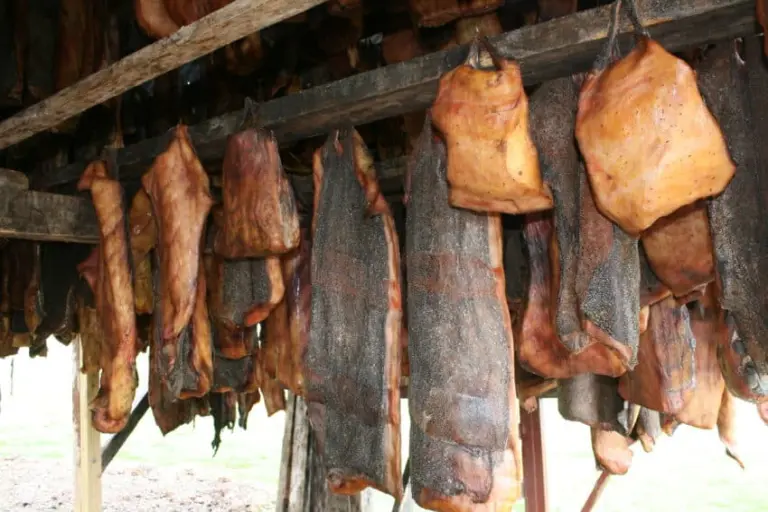
>> Balut: The infamous filipino street food that dares you to taste tradition
To make it edible, Icelanders developed an ancient technique:
- The shark is gutted and beheaded
- It’s buried in gravel or sand for 6–12 weeks, allowing it to ferment
- It’s then hung to dry for several more months
- Once ready, it’s sliced into cubes and served cold — often with a shot of Brennivín, Iceland’s potent local schnapps (nicknamed “Black Death”)
A Bite of History: Why Icelanders Eat Hákarl
Back in the Viking Age, Iceland was isolated, with few resources. The Greenland shark, though abundant, was poisonous to eat raw. So Icelanders invented this fermentation process out of necessity, not choice.
Over time, Hákarl evolved from survival food to cultural treasure — served during the midwinter festival Þorrablót, where Icelanders celebrate their heritage with traditional dishes.
It’s a story of resilience, innovation, and identity — much like Iceland itself.

>> A strange cup of coffee and cheese that redefine Colombia
What Does Hákarl Taste Like?
Let’s be honest: Hákarl is not for the faint of heart.
Expect:
- A strong ammonia-like odor (think window cleaner or cat pee)
- A chewy texture, somewhat rubbery
- A flavor that is… unforgettable — sharp, salty, and sour with chemical notes
Anthony Bourdain called it “the single worst, most disgusting and terrible tasting thing” he’d ever eaten. Gordon Ramsay reportedly spat it out.
But many Icelanders — and brave tourists — develop a strange affection for it.
“Once you get past the smell, it’s not that bad,” says a local in Reykjavík. “It’s part of who we are.”
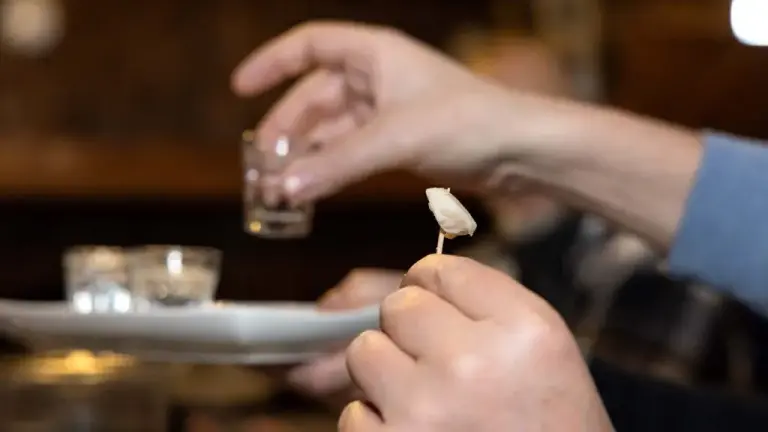
>> Casu Marzu: The forbidden Cheese that wiggles with life
Where to Try Hákarl in Iceland
Ready to try Hákarl? These are the best places to do it:
Reykjavík
- Íslenski Barinn (The Icelandic Bar) – Traditional dishes with tourist-friendly explanations
- Café Loki – Right across from Hallgrímskirkja, famous for its Hákarl tasting platter
- Kolaportið Flea Market – Find Hákarl sold in small portions by local vendors
Outside the Capital
- Bjarnarhöfn Shark Museum (Snæfellsnes Peninsula) – Learn about the shark fermentation process and taste Hákarl on-site
- Þorrablót Festivals (January–February) – Join locals for a celebration of Viking-era cuisine
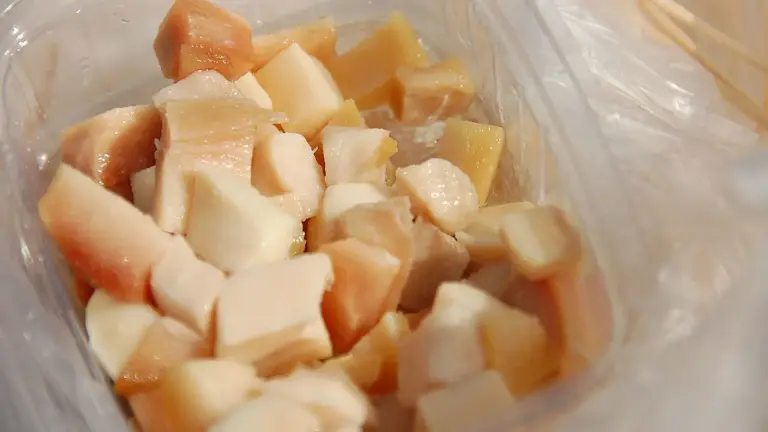
Pro Tips for First-Time Hákarl Tasting
- Don’t smell it first — just bite. Trust us.
- Pair it with Brennivín, Iceland’s signature schnapps. It helps mask the taste.
- Start small — a tiny cube is enough for your first try.
- Have fun — Hákarl is a challenge, not a punishment.
>> The world’s smelliest fish: A dish that dares you to taste it
The Hákarl Challenge: Can You Handle It?
Thousands of tourists take the “Hákarl Challenge” and post their reactions online. From tears to triumph, the videos are hilarious and real. Look up #HakarlChallenge on TikTok or YouTube, and you’ll see:
- Friends daring each other at Icelandic bars
- Couples gagging and laughing
- Travelers holding their nose and taking the bite
Trying Hákarl has become a foodie badge of honor, like eating balut in the Philippines or scorpion in Thailand.

Why Hákarl Is Worth the Trip
Hákarl isn’t just a dish — it’s a cultural experience. It connects you with Iceland’s rugged past, its deep connection to the sea, and its proud culinary identity.
Most importantly, it challenges what you think food should be.
Travelers who try Hákarl often describe the moment as a highlight of their trip. Not because it tasted amazing — but because they stepped out of their comfort zone and embraced something truly Icelandic.
And isn’t that what travel is all about?
>> Ayran: The Ancient Elixir of Turkey That Time Couldn’t Forget
A Final Bite of Icelandic Culture
In a country shaped by volcanoes, glaciers, and fierce independence, it makes sense that its food would be just as bold. Hákarl is Iceland’s most extreme dish, but it’s also its most symbolic — a reminder of how cultures adapt, survive, and celebrate their uniqueness.
So when you find yourself in Reykjavík, staring down a cube of fermented shark…
Take a deep breath.
Raise your Brennivín.
And taste the Viking spirit.
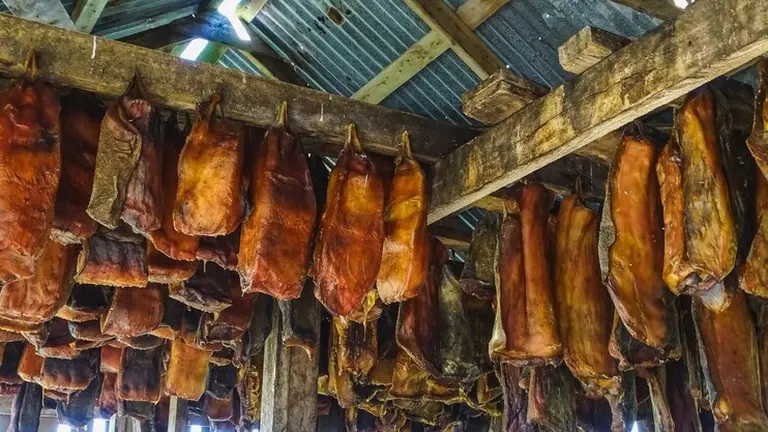
FAQs about Hákarl – Iceland’s Fermented Shark
1. What is Hákarl?
Hákarl is a traditional Icelandic delicacy made from fermented Greenland shark. Because the fresh meat is toxic, it undergoes a curing process where it’s buried, fermented, and air-dried for several months before it becomes safe to eat.
2. What does Hákarl taste like?
Hákarl has a strong ammonia-like smell and a pungent, fishy taste. The texture is chewy and slightly rubbery. Many people describe the flavor as intense, with chemical, salty, and sour notes. It’s considered an acquired taste.
3. Why does Hákarl smell so bad?
The shark contains high levels of urea and trimethylamine oxide, which are released during fermentation. These compounds give it a distinct ammonia scent, often compared to household cleaner or urine. The smell is stronger than the taste.
4. Is Hákarl safe to eat?
Yes. While fresh Greenland shark meat is toxic, the fermentation process neutralizes harmful substances, making Hákarl completely safe to consume.
5. Where can I try Hákarl in Iceland?
You can find Hákarl in:
- Reykjavík (e.g., Café Loki, Íslenski Barinn)
- Kolaportið Flea Market (weekends)
- Bjarnarhöfn Shark Museum in Snæfellsnes
- Þorrablót festivals (January–February)
6. Do Icelanders actually eat Hákarl?
Yes, but it’s not part of everyday meals. Icelanders mostly eat Hákarl during festivals, national celebrations, or to share tradition with tourists. Many locals enjoy it with Brennivín, the local schnapps.
7. What is the “Hákarl Challenge”?
The Hákarl Challenge refers to tourists trying fermented shark for the first time, often filming their reaction for social media. It’s a popular food dare and cultural experience in Iceland.
8. What drink pairs best with Hákarl?
Traditionally, Hákarl is paired with Brennivín, a strong Icelandic schnapps known as “Black Death”. It helps mask the strong flavor and is considered part of the ritual.
9. Is Hákarl suitable for vegetarians or halal/kosher diets?
No. Hákarl is made from shark meat and is not suitable for vegetarians. Its preparation and origin also do not meet halal or kosher dietary guidelines.
10. Can I bring Hákarl home as a souvenir?
Yes, but check customs regulations. Some Icelandic shops sell vacuum-sealed Hákarl for tourists. However, due to its strong odor and nature, you should verify with your home country’s import laws.
11. How is Hákarl made?
The shark is:
- Gutted and buried in gravel or sand for 6–12 weeks to ferment
- Hung to dry in an open shed for 2–4 months
- Cut into cubes and served cold
This ancient Viking-era method helps make otherwise poisonous meat edible and safe.
12. Why do people still eat Hákarl today?
Hákarl is a symbol of Icelandic survival and tradition. Even if not popular in daily meals, it is respected as a cultural icon and is used to celebrate Iceland’s history, especially during winter festivals like Þorrablót.
13. Is trying Hákarl worth it for tourists?
Absolutely — if you’re a food adventurer or culture seeker. It may not be delicious, but it’s a memorable, story-worthy experience and a deep dive into authentic Icelandic culture.


